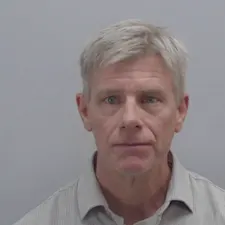
Newark Mid-Air Disaster Narrowly Avoided by Fatigued Controller
Newark Liberty International Airport from the air. Photo by Fan Railer. Public domain.
It was just another evening at Newark Liberty International Airport — until two jets found themselves hurtling directly toward one another. What happened in the skies above New Jersey on May 4 wasn't just a routine error. It was a moment that nearly turned catastrophic, and the fallout is prompting a wave of concern, reform, and reckoning.
The Day It Nearly Happened
Around 6:10 p.m. on May 4, a Gulfstream business jet had just lifted off from Morristown Municipal Airport. At the same time, a Pilatus PC-12 was departing from nearby Teterboro Airport. Both aircraft were flying through the same corridor — at the same altitude and on an almost head-on trajectory.
In the control room of the Philadelphia Terminal Radar Approach Control (TRACON) facility, air traffic controller Jonathan Stewart saw it unfold in real time. The jets appeared nose-to-nose on his radar screen, barreling toward a potential mid-air collision with seconds to spare.
He acted fast, coordinating separation instructions to avert disaster. The FAA later described the event as a "temporary loss of separation," adding that the Gulfstream pilot had received correct instructions, according to CNN.
A Broken System?
Stewart, 45, is a veteran supervisor at the TRACON facility that monitors air traffic for Newark and regional airports. That day, he had been on duty for over three hours — well past the two-hour maximum he normally adheres to for maintaining mental sharpness.
He was so concerned about potential radar and radio blackouts — which had happened just days before — that he jotted down callsigns by hand in a notebook, preparing for the possibility of flying blind.
"I don't want to be responsible for killing 400 people," he told The Wall Street Journal, as reported by CNN.
Fatigue on the Frontlines
Stewart said the incident happened during a stretch of fatigue, hunger, and high workload — factors that deeply impact human performance in such a high-stakes environment.
He's not alone. According to the FAA, the TRACON facility requires 38 certified professional controllers but currently operates with only 24, or 63% of the needed staff, CNN reported.
The shortfall isn't isolated — the FAA is currently short about 3,000 air traffic controllers nationwide.
Five other controllers also went on 45-day trauma leave after a similar radar blackout on April 28, when screens went dark for 90 seconds and radios cut out for 30 seconds during a busy shift.
Who's to Blame?
In the aftermath, United Airlines CEO Scott Kirby claimed that over 20% of FAA controllers had "walked off the job," suggesting their absence was to blame for delays and cancellations, according to CNN.
Stewart countered that assertion, saying to the New York Post, "Hopefully he misspoke because the controllers did not walk off the job. Walking off the job implies that of their own free will, left and refused to do their job. There's not a single controller in Newark Area C — to the best of my knowledge — that does not love their job."
He clarified that controllers were removed because they were no longer mentally fit to safely operate under the trauma of recent events.
Stewart also emailed FAA managers with his concerns following the May 4 close call — a move that marked his shift into taking public action.
What Happens Next?
Federal authorities say help is on the way. Transportation Secretary Sean Duffy announced a major plan to overhaul the aging air traffic control infrastructure, asking Congress for billions to replace 618 radar systems and upgrade 4,600 high-speed communications lines, the New York Post reported.
An emergency task force has been created specifically for Newark's airspace.
In tandem, the FAA recently convened a delay-reduction summit with major airlines like United, Delta®, JetBlue®, and American® to discuss voluntarily reducing flights through the summer season.
But the road to recovery won't be quick. Officials admitted during a congressional hearing that infrastructure updates and hiring solutions could take another year or longer to implement.
Closing Thoughts
Every time you board a flight, you're placing your safety in the hands of professionals like you — people navigating not just jets through crowded airspace but a system under stress. The near-miss over Newark wasn't just a close call. It was a warning sign blinking red warning that America's air traffic system may not be as sturdy as we think.
References: NJ air traffic controller reveals why he went on 'trauma leave': 'Don't want to be responsible for killing 400 people' | Veteran air-traffic controller speaks out about staffing and tech problems amid blackouts and delays at Newark airport | Air Traffic Controller Whose Split-Second Decision Narrowly Avoided Mid-Air Collision Speaks Out























